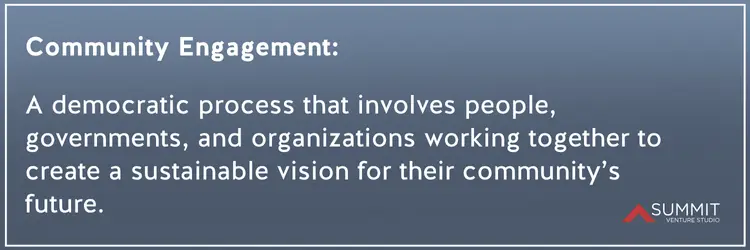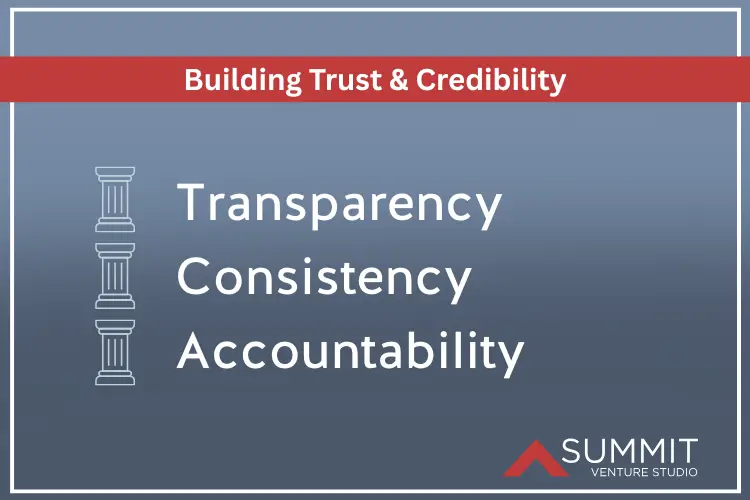Based on insights from Candy Isabel’s Midday Connect presentation, “How to Connect with the Community You Serve.”
Great ventures don’t grow in isolation.
When founders take the time to listen to the people they hope to serve, they discover not only better solutions but loyal advocates who help them grow faster. This article distills lessons from Candy Isabel, Founder & CEO of Khamai Strategies, whose Midday Connect session taught exactly how to turn community engagement into a growth engine.
You’ll learn why trust is the real currency of impact, what mistakes to avoid when reaching out, and a step-by-step framework to authentically engage your community.

When Great Ideas Miss Their Mark
Many founders begin with a strong product vision but a weak community connection. They post updates, run ads, and host events, yet still feel unseen by the very people they want to help.
Without direct dialogue, even well-intentioned products miss the mark. Founders assume they understand user needs, but those assumptions erode alignment. Community engagement isn’t an optional marketing strategy. Community engagement is the foundation of trust, relevance, and long-term sustainability.
Without it, you’re likely to experience missed opportunities, stalled adoption, and a community that feels ‘spoken at’ rather than ‘heard.’
“Community engagement is not just engaging your customers, but also the community you serve – the potential customers.”
-Candy Isabel
The Hidden Cost of Silence
Ignoring the community voice can carry steep costs.
- Eroded trust. When founders make decisions in a vacuum, stakeholders lose faith.
- Brand disconnect. Messaging feels polished but hollow, and followers disengage.
- Lost innovation. Valuable insights from real users never surface.
“If people don’t trust who you are, they may not purchase your product or engage with your brand.”
-Candy Isabel
Candy illustrated this with a familiar scene: organizations launch a program or feature only to discover later that their audience never wanted or needed it, or couldn’t access it. The fix isn’t another marketing campaign. It’s rebuilding credibility through transparency and follow-through.
Common mistakes founders make:
- Treating engagement as a one-time survey instead of a continuous process.
- Speaking for communities rather than with them.
- Overlooking representation – no one on the team reflects the target audience.
- Focusing on speed over trust.
As Candy put it, “We live in a world where information is thrown at us all the time.” To cut through the noise, people must feel that you see them.
Building Trust That Lasts
Candy’s framework centers on three pillars: transparency, consistency, and accountability – supported by inclusive outreach and co-creation.

For founders, these principles form a clear, actionable guide to building authentic relationships with the people they serve. Each step below offers a way to turn community engagement from an abstract ideal into a daily practice.
1. Be Transparent and Show the Real Work
Create open communication loops. Share behind-the-scenes progress, challenges, and lessons learned.
As Candy states, “People love to see things built from the ground up.”
- Publish progress updates before a launch.
- Invite feedback early, not after decisions are made.
- Explain how community input shapes your roadmap.
2. Stay Consistent and Accessible
Your (online and offline) presence builds reliability. Use consistent brand language, tone, and values across channels. If you pause communication for weeks, trust cools.
Checklist for consistency
- Post regularly, even short updates.
- Respond to comments and direct messages.
- Mirror your brand voice across emails, events, and social posts.
3. Own Mistakes and Model Accountability
When errors happen, acknowledge them publicly and share what you’re doing to correct or improve. Vulnerability doesn’t weaken credibility. It strengthens it.
“It’s okay to mess up. The most important thing is to recognize it and speak on it.”
-Candy Isabel
4. Meet People Where They Are
Not everyone is on social media. Mix your outreach methods:
- In-person events, local partnerships, posters, and mailers
- Listening sessions or focus groups at existing community gatherings
- Surveys and text campaigns for quick feedback
Candy described working with a city where digital outreach failed to reach Latino immigrants. The solution was tabling at cultural events—face-to-face engagement built recognition and trust faster than any online ad.
5. Represent and Include
If your audience is diverse, your team and imagery should reflect it. Representation signals respect and relatability.
Candy reminds us, “It’s huge to have someone on your team that looks like the community you serve.”
6. Build a Community Persona
Candy’s Community Persona Worksheet helps visualize who you serve as one composite person.
Ask:
- Where do they live, work, and gather?
- What are their values and communication styles?
- What barriers do they face in accessing your solution?
This exercise clarifies and informs outreach tone, channels, and offerings.
7. Co-Create Solutions
Move from consultation to collaboration. When possible, invite community representatives to test ideas, co-design pilots, or sit on advisory groups.
Mini case study:
A local nonprofit planned transportation services for seniors but didn’t know where to begin. Candy advised them to meet organizations already serving seniors, listen to their insights, and explore collaboration. That partnership unlocked instant access and trust. And the pilot succeeded because seniors helped shape it.
Recap
Authentic engagement is a relationship. It is not a campaign.
By being transparent, consistent, accountable, and inclusive, founders earn trust that compounds over time.
Start small: host a listening session, create a feedback form, or attend an existing community event.
When founders learn how to engage their community, growth follows naturally.
What’s one action you can take this week to connect more authentically with your audience?
How to engage your community:
Begin by listening to the people you serve, then co-create solutions with them. Build trust through transparency, consistent communication, and accountability, ensuring your engagement reflects real community needs rather than assumptions.
Interested in more founder-focused insights like this? Subscribe to the Summit Venture Studio newsletter and visit the Midday Connect archive for more founder resources.
FAQ
It’s the ongoing process of involving the people your startup serves in shaping decisions, programs, features, and products so your work solves real problems and earns lasting trust.
Trust determines whether people will share feedback, participate, or recommend your solution. As Candy said, “If people don’t trust who you are, they may not purchase your product or engage with your brand.”
Meet them where they are: community centers, events, churches, schools, or local markets. Blend physical and digital outreach for accessibility.
A tool that summarizes key traits of your audience (values, communication styles, challenges, etc.) so you can tailor engagement strategies effectively.
Track both quantitative and qualitative indicators: participation numbers, repeat engagement, new partnerships, and stories showing improved trust or collaboration.
Presenter Links:
Candy Isabel on LinkedIn
Watch Candy Isabel’s full Midday Connect presentation on YouTube.
Khamai Strategies website

